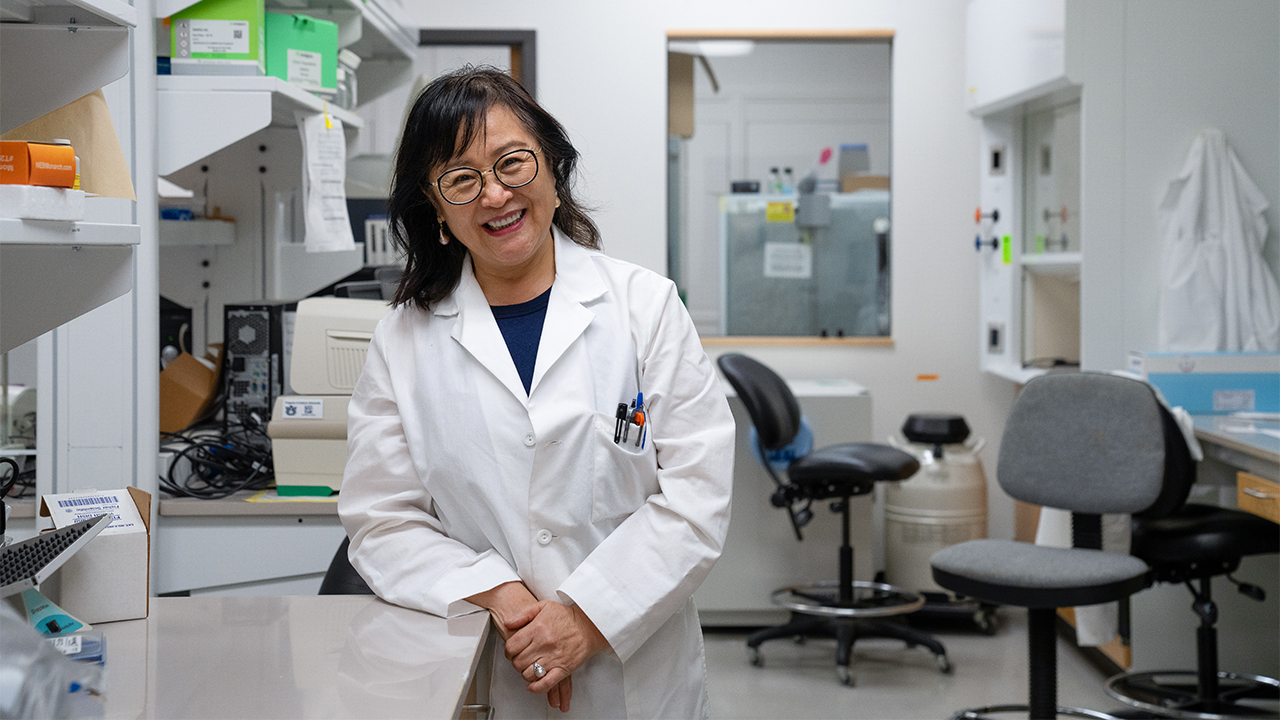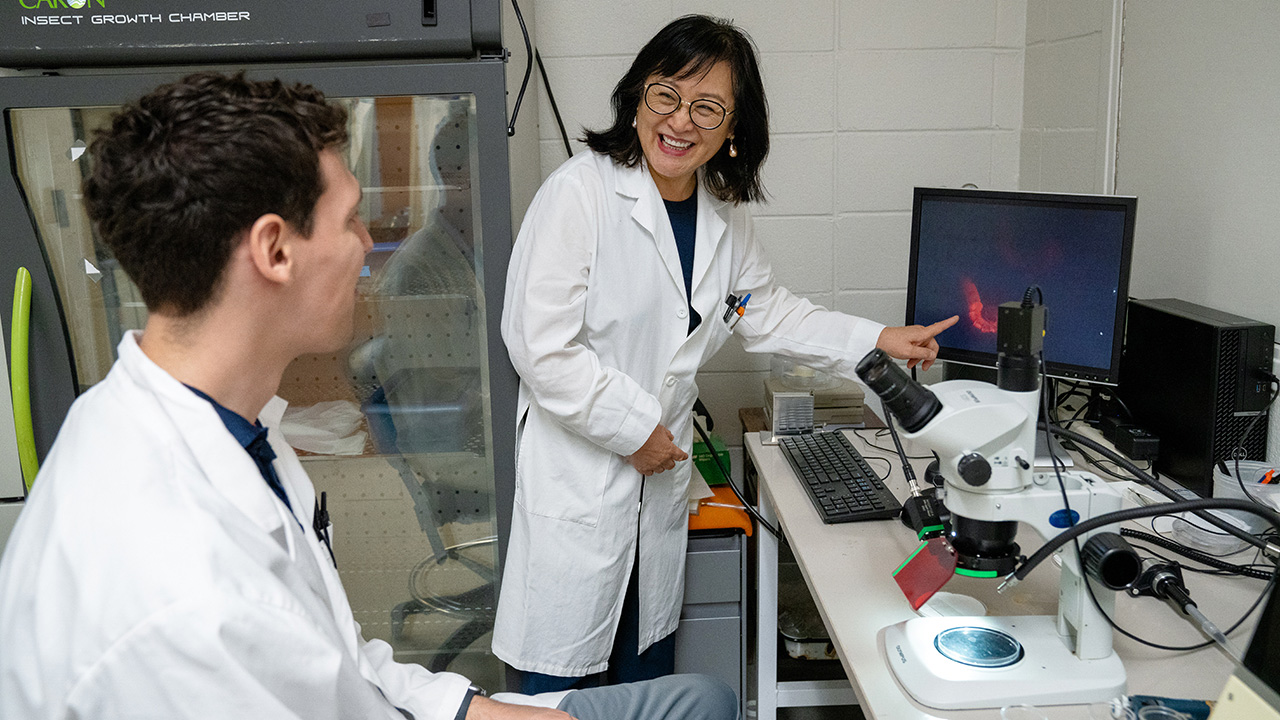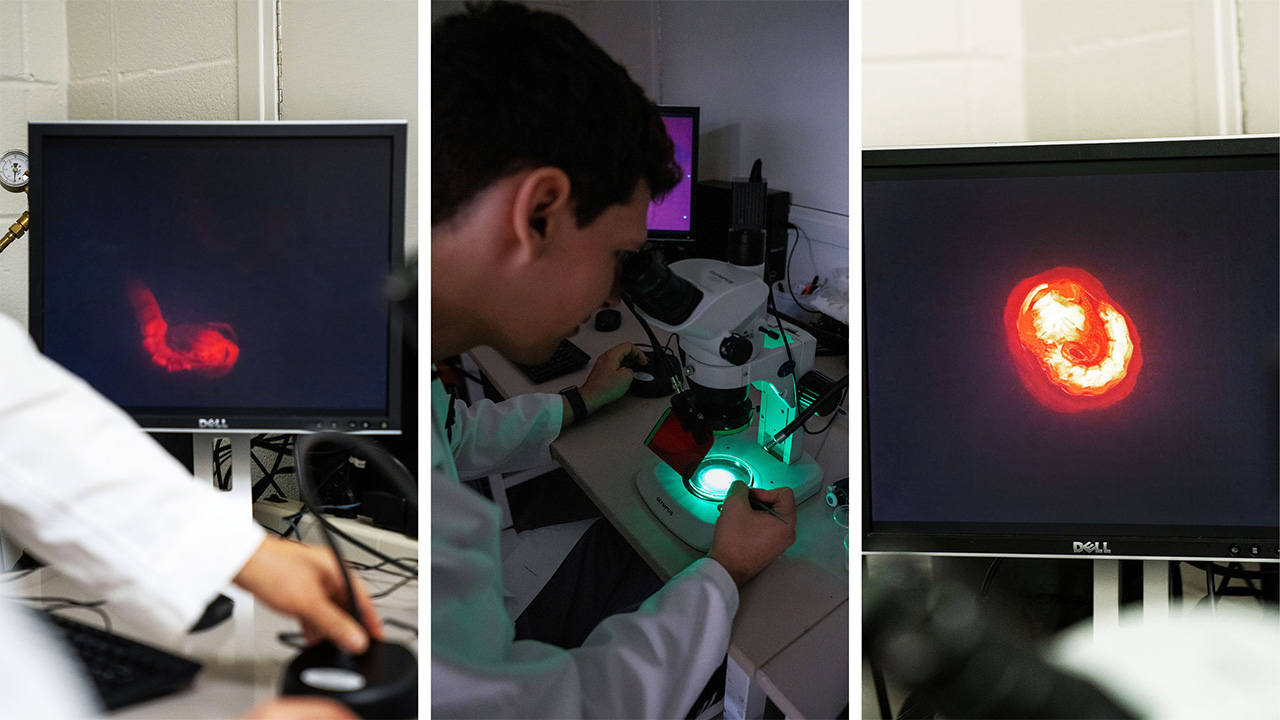content body
Insect-borne diseases can wreak havoc on human health. Diseases carried by mosquitoes alone account for an estimated 700,000 deaths across the world — earning mosquitos the title of “deadliest animal” from the Centers for Disease Control and Prevention.
“Insecticides are very efficient for the control of insect pests, especially when there’s an outbreak,” Endowed Professor Nannan Liu said. “While other methods could be used in pest control, insecticide treatments are generally highly effective and immediate.”
Insecticides may be rapid, but they’re not foolproof. Some insects have even devised strategies to circumvent these insecticides.
“The big question is how do we overcome this resistance?” Liu said. “We have to understand the molecular mechanisms within insects.”
Liu has spent over 26 years within the College of Agriculture at Auburn University unraveling some of these mysteries of insects’ molecular mechanisms. Throughout her multi-decade quest to better understand insecticide resistance, she has published 118 papers and garnered over $3 million in research funding. She has been recognized for her work as an elected fellow of the Entomological Society of America and as one of the top 2% of insect scientists in the world.
Unraveling the mysteries of insects’ molecular mechanisms
When Liu first arrived at Auburn in the late 1990s, her first goal was to gauge the prevalence of insecticide resistance in Alabama’s mosquitoes. She didn’t waste any time before starting her fieldwork collecting mosquitos across the state.
Back in the laboratory — a place Liu said she loves to be — she discovered insects develop resistance to insecticides quickly.
“We knew resistance was present, so our next question: What causes this resistance development?” she said.
Liu used a variety of techniques to investigate this question, employing whole transcriptome analysis — a technique used to uncover all the RNA in an organism — to identify genes that tend to be overexpressed in insects that are resistant to insecticides.
“From there, we identified numerous candidate genes — many of them were associated with metabolism of insecticides,” she explained. “One notable set of metabolic genes were the P450 genes, which are the genes involved in breaking down pesticides and other chemicals.”
While scientists understood overexpression of P450s was a culprit in insecticide resistance, much was unknown about which molecular mechanisms were guiding this process until Liu and her team tackled the topic.
Liu’s group discovered that a G-protein coupled receptor plays a key role in regulating P450 expression. Among her findings, knocking out the G-protein coupled receptor leads to decreased P450 expression, reducing the insect’s resistance to insecticides.
“The biggest significant finding from my group has been identifying this G-protein receptor in insecticide resistance,” she said. “These findings can aid in the development of new mosquito-specific chemicals that target the GPCR regulatory pathways unique to individual mosquito species.”
Making a positive dent in scholarship, industry
Liu’s findings have long-term implications for human health. Other animals and insects are often adversely impacted by insecticides. By understanding the inner-workings of insects’ insecticide resistance, industry leaders can better develop insecticides tailored to a single insect species.
“The goal would be to develop an insecticide that selectively targets only insect pests without causing harm to the environment or humans, minimizing pollution and promoting environmental safety,” she said.
In the meantime, Liu continues to work in her lab generating basic science insights with her team. Her research is foundational to her discipline, with one of her studies focused on gene regulation in insecticide resistance now cited about 950 times and counting.
For Liu, great science starts with a solid foundation.
She invests substantial time in training graduate students and post-doctorates in her laboratory, prioritizing gaining a comprehensive understanding of the problems and gaps in the field through exhaustive literature reviews and investing in rigorous study preparations.
“Conducting effective research requires a sound design,” she said. “Prior to initiating any project, it is crucial to possess a clear vision, a precisely outlined concept and a thorough comprehension of the research objectives.”
Liu also encourages her students to cultivate their hard work, positivity and resilience — traits she embodies as a role model. One of the secrets to her scientific success: not letting negative feedback get her down.
“When receiving feedback from a review, it's important to carefully consider the underlying reasons behind the questions raised. This process is instrumental in improving the quality of your scientific work,” Liu said. “The negative comments come back to the positive — and can fuel you to move forward.”
Advance agriculture insights.
Get started.






